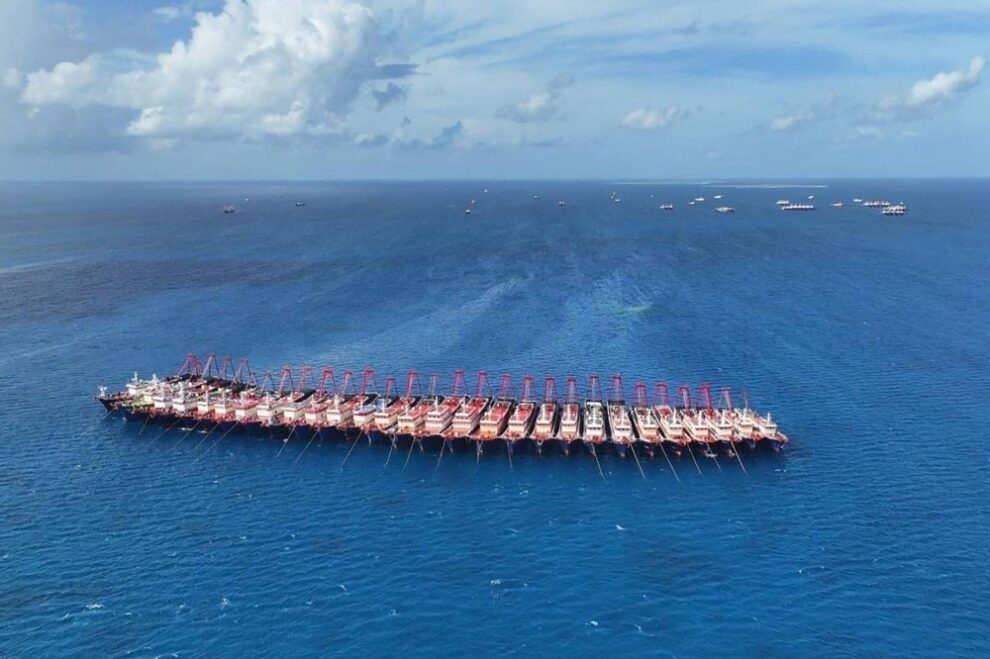The Philippines said Sunday that more than 135 Chinese “maritime militia” ships were “swarming” a reef that it claims sovereignty over in the disputed South China Sea, with Manila calling the vessels’ ramped-up presence “alarming.”
The existence of the Chinese ships, ostensibly fishing boats, in the area of Whitsun Reef, which the Philippines calls Julian Felipe Reef, had grown since Nov. 13, when 111 of the vessels were detected, Philippine Coast Guard spokesman Jay Tarriela said in a statement.
Whitsun Reef in the Spratly Island chain, around 325 kilometers (200 miles) west of the Philippines’ Palawan Island, is also claimed by China and Vietnam. But it is more than 1,000 km from China’s nearest landmass, Hainan Island.
Whitsun lies within the Philippines’ internationally recognized exclusive economic zone, which extends 200 nautical miles (230 miles) beyond a nation’s territorial sea, and Manila says it enjoys the exclusive right to exploit or conserve any resources.
The Philippine Coast Guard said officials had directed it to “carry out a maritime patrol to challenge and document the illegal presence” of the Chinese maritime militia vessels — which Manila characterized as an “alarming development” — but that no response was made to radio challenges by the coast guard.
The incident appeared similar to one in March 2021 that saw Beijing send more than 200 maritime militia vessels into the area for several weeks as it ignored calls from Manila to leave the reef.
That standoff also saw the United States, which has a mutual defense pact with the Philippines, back Manila in asking the Chinese fishing flotilla to leave and accusing China of using its “maritime militia to intimidate, provoke, and threaten other nations, which undermines peace and security in the region.”
China ignored that call, insisting that the offshore territory was its own.
The faceoff between Manila and Beijing in the South China Sea in recent months, including a collision and near collisions at sea close to key military outposts, have stoked fears that the row could boil over into conflict.
Under its so-called nine-dash line, Beijing claims some 90% of the South China Sea — a position that flies in the face of a July 2016 ruling by the Permanent Court of Arbitration at The Hague invalidating most of those claims.
Beijing does not recognize the ruling, calling it “a piece of waste paper.”
It has also conducted a massive land-reclamation project to essentially build and militarize a number of islands in the waters, despite protests from other claimants, as well as the United States and Japan. Washington and Tokyo fear that the Chinese-held outposts, some of which boast military-grade airfields and advanced weaponry, could be used to restrict free movement in an area that includes vital sea lanes.
Under President Ferdinand Marcos Jr., Manila has boosted efforts to assert its claims in the strategic waterway, repeatedly protesting, filming and publicizing alleged harassment by Chinese vessels there. China has maintained that its actions are lawful and professional.
The Philippines has also bolstered defense ties with the U.S., Australia and Japan in an attempt to bring more allies and partner nations on board in support of its moves, conducting joint military exercises with all three countries.
Source : The Japan Times










